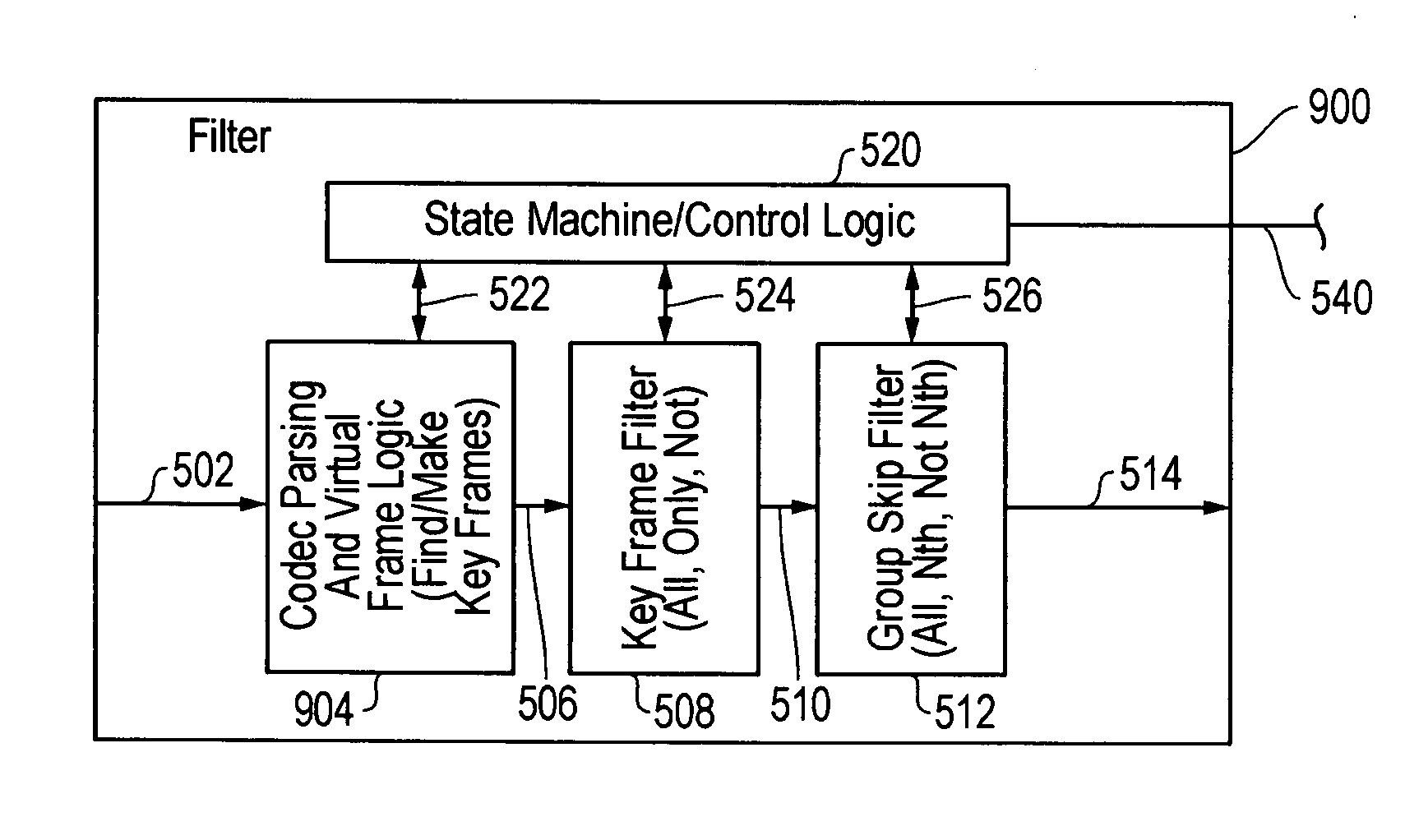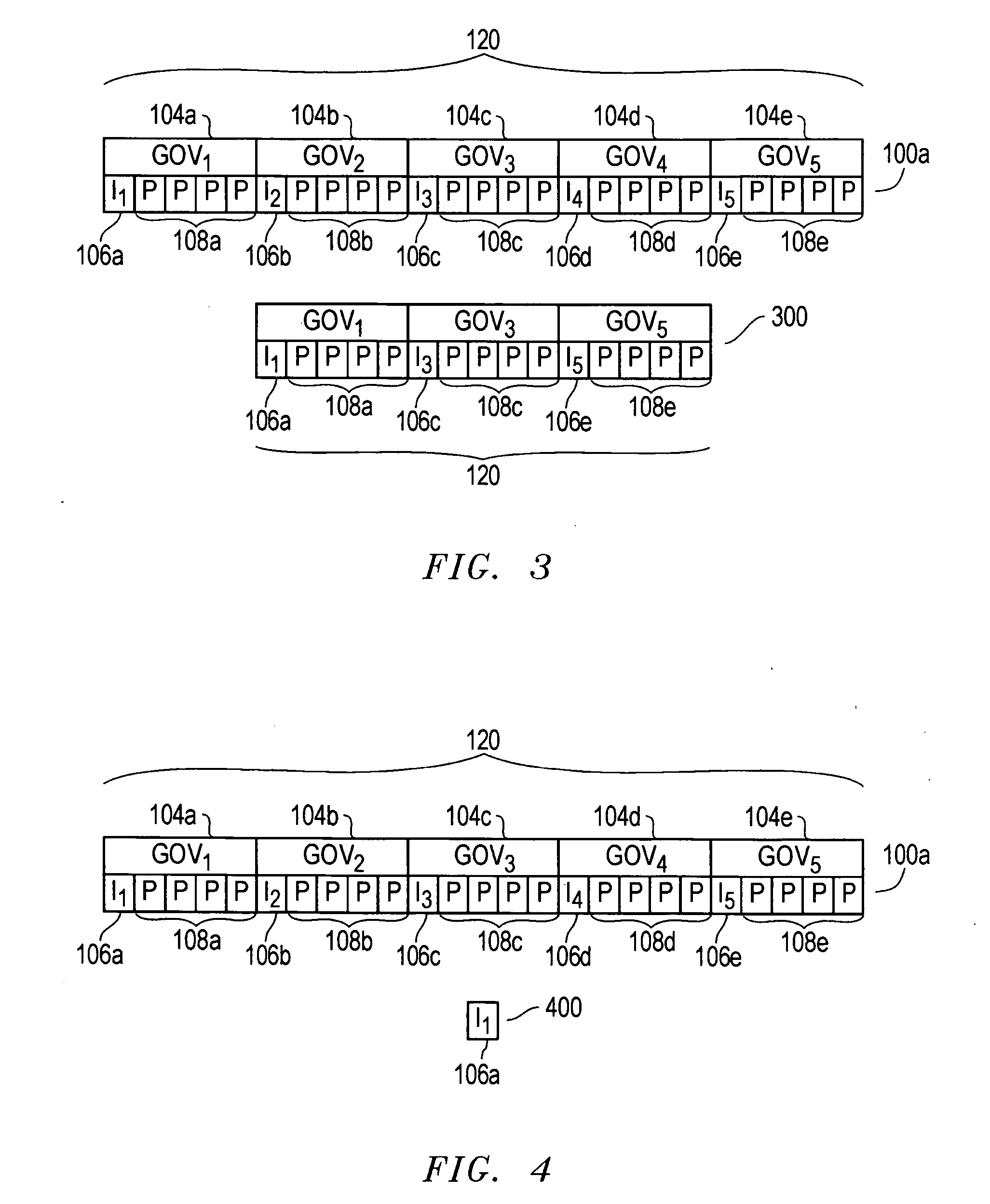Systems and methods for media stream processing
a technology of media stream and processing method, applied in the field of media stream, can solve the problem that the human observer cannot typically comprehend all of the video frames of a conventional video stream, and achieve the effect of reducing the overall storage capacity requiremen
- Summary
- Abstract
- Description
- Claims
- Application Information
AI Technical Summary
Benefits of technology
Problems solved by technology
Method used
Image
Examples
Embodiment Construction
[0026] The disclosed systems and methods may be implemented to process any type of original media stream, e.g., for storage and / or delivery across a computer network medium, including both compressed and uncompressed media streams. Examples of compressed media streams include key-frame based media streams, i.e., media streams that employ key frames. In this regard, many types of modern compression codecs and their associated streams employ two types of frames that will be referred to herein as key frames and dependent frames. Key frames are those complete frames of a media stream in compressed form that have meaning outside the context of other frames and that are capable of being processed autonomously without association with other frames from the media stream. Dependent frames are those incomplete frames of a media stream that are “delta frames” to some other referenced frame / s of the media stream. In operation, dependent frames may be interspersed with key frames in a compressed...
PUM
 Login to View More
Login to View More Abstract
Description
Claims
Application Information
 Login to View More
Login to View More - R&D
- Intellectual Property
- Life Sciences
- Materials
- Tech Scout
- Unparalleled Data Quality
- Higher Quality Content
- 60% Fewer Hallucinations
Browse by: Latest US Patents, China's latest patents, Technical Efficacy Thesaurus, Application Domain, Technology Topic, Popular Technical Reports.
© 2025 PatSnap. All rights reserved.Legal|Privacy policy|Modern Slavery Act Transparency Statement|Sitemap|About US| Contact US: help@patsnap.com



